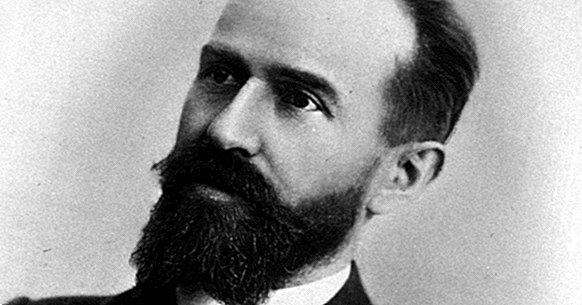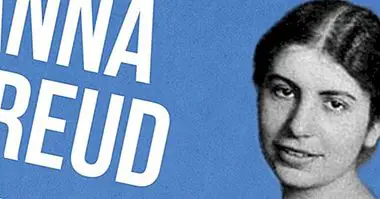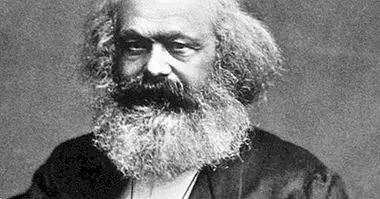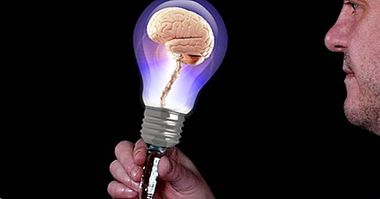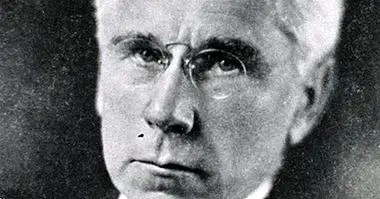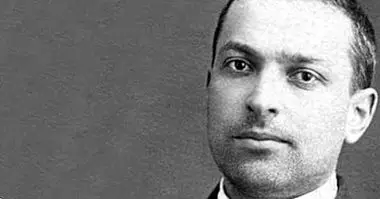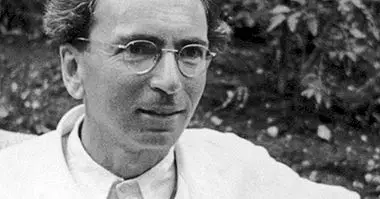Josef Breuer: biography of this pioneer of psychoanalysis
The doctor and physiologist Josef Breuer he is best known for using the cathartic method for the first time in the famous case of Anna O., which would inspire his pupil Sigmund Freud to create psychoanalysis. Nevertheless, Breuer's conceptions differed from Freud's in central aspects.
Breuer is a relevant figure in the history of neurophysiology and psychoanalysis. In this article we will review his biography, his contributions to these two fields and his relationship with Freud; for this it is necessary to describe also the outstanding role of Anna O. in the field of hysteria .
- Related article: "The 9 types of Psychoanalysis (theories and main authors)"
Biography of Josef Breuer
Josef Breuer (1842-1925) studied Medicine at the University of Vienna and during his first years of professional practice worked as an assistant to Johann von Oppolzer and later to Karl Hering, a physiologist known for his studies on visual perception and eye movements.
Breuer made important contributions in the field of neurophysiology . During his collaboration with Hering he described the role of the vagus nerve in the respiratory response; this would give rise to the concept of the "reflection of Hering-Breuer", which is still valid today.
He was also one of the first to propose that the balance depends on the movement of fluid in the semicircular canals of the inner ear and the information that the brain receives in relation to these movements.
During a good part of his life Breuer worked as a family doctor and as a personal doctor of many intellectuals living in Vienna, among them the philosopher and psychologist Franz Brentano. He was also professor of physiology at the University of Vienna, where instructed Sigmund Freud, with whom he would collaborate later .
- Maybe you're interested: "Jean-Martin Charcot: biography of the pioneer of hypnosis and neurology"
The case of Anna O.
In 1880 Breuer began to treat Bertha von Pappenheim, a patient of hysteria who played a fundamental role in the emergence of psychoanalysis. It would go down in history as "Anna O." since this was the pseudonym that Breuer and Freud granted him in their joint work Studies on hysteria, the cornerstone of early psychoanalysis.
According to Breuer, Pappenheim had two personalities that differed more and more as the treatment progressed. While the first was sad and apprehensive, the second had a more childish and explosive character. This case is one of the first recorded examples of dissociative identity disorder (or "multiple personality").
Breuer noted that the symptoms of Pappenheim, which consisted mostly of partial paralysis, muteness and blindness, temporarily remitted when he talked about them under hypnosis and attributed a cause . The patient also felt relieved when talking about her dreams or hallucinations, and it was her own preferences that guided Breuer.
Pappenheim called this type of intervention "Speech cure" or "chimney cleaning" ; thus the cathartic method was born, consisting of hypnotising the patient so that he remembered the traumatic event that triggered the symptom (or so that he invented such a memory) and thus eliminate the associated negative emotions, and consequently the symptom.
Freud and the "Studies on hysteria"
The case of Anna O. inspired Sigmund Freud to write the book Studies on hysteria in collaboration with his teacher Breuer. In this work, which appeared in 1895, describes the treatment of Bertha von Pappenheim and four other women through hypnosis and the cathartic method.
At the theoretical level, Freud and Breuer defended two different hypotheses in the book: while the first opined that hysteria was always due to traumatic memories related to sexuality, according to Breuer there could also be neurophysiological causes.
Contrary to what is told in "Studies on hysteria", Anna O. did not fully recover through the treatment of Breuer but ended up being hospitalized. However, over time his symptoms eased and he became a prominent personality in German feminism of the time, as well as a firm opponent of psychoanalysis.
The relationship between Breuer and Freud deteriorated rapidly. Freud not only showed a confidence in the cathartic method that Breuer considered unjustified, but he also mythologized the case of Anna O. to promote what would become psychoanalysis.Towards the end of his life Breuer saw Freud down the street and made a move to greet him, but his disciple ignored him.
- Related article: "Sigmund Freud: life and work of the famous psychoanalyst"
Breuer's legacy
The "speech cure" that Breuer developed with the inestimable collaboration of Bertha von Pappenheim would become the seed of Freud's psychoanalysis and, consequently, of the conventional psychotherapy of the next century.
Breuer's hypothesis regarding the case of Anna O. sparked interest in unconscious processes, especially around the etiology of hysteria and other neuroses . However, Breuer distanced himself from Freud because he did not agree with his emphasis on psychosexual traumas as the sole cause of these disorders.
Breuer considered that hypnosis and the cathartic method They could facilitate the creation of false memories , although these were felt by patients as true. Many later critics of Freud would give the reason to Breuer and to its more cautious approach.
- You may be interested: "Effect Mandela: when many people share a false memory"
Bibliographic references:
- Breuer, J. & Freud, S. (1893-1895). Studies on hysteria In Complete Works, volume II. Buenos Aires: Amorrortu.
- Leahey, T. H. (2004). History of Psychology, 6th Edition. Madrid: Pearson Prentice Hall.

